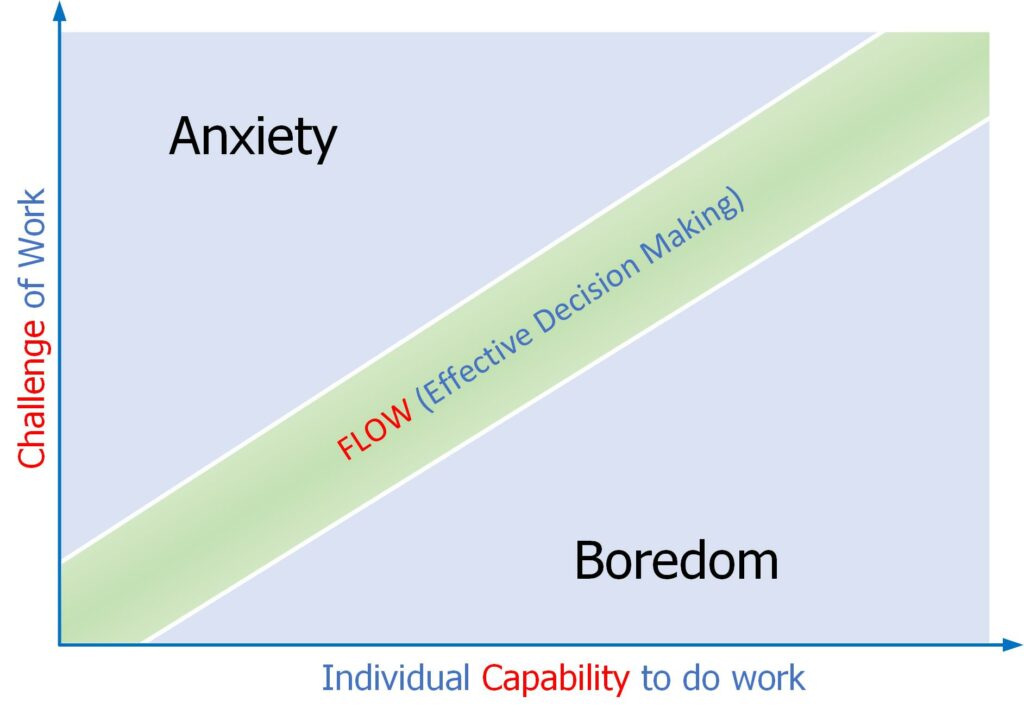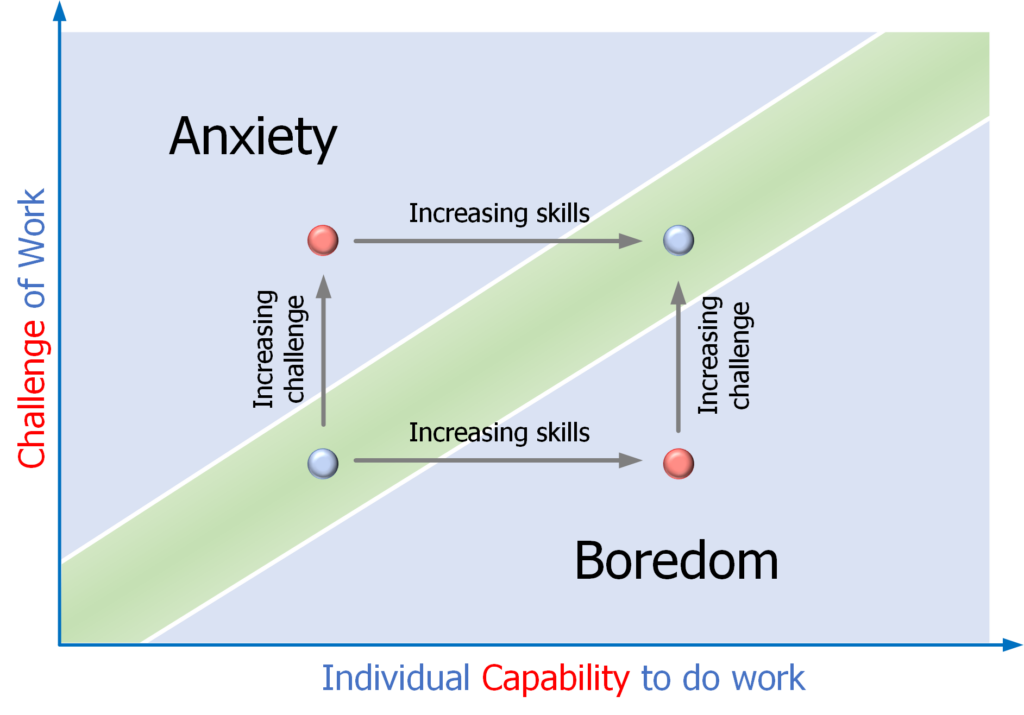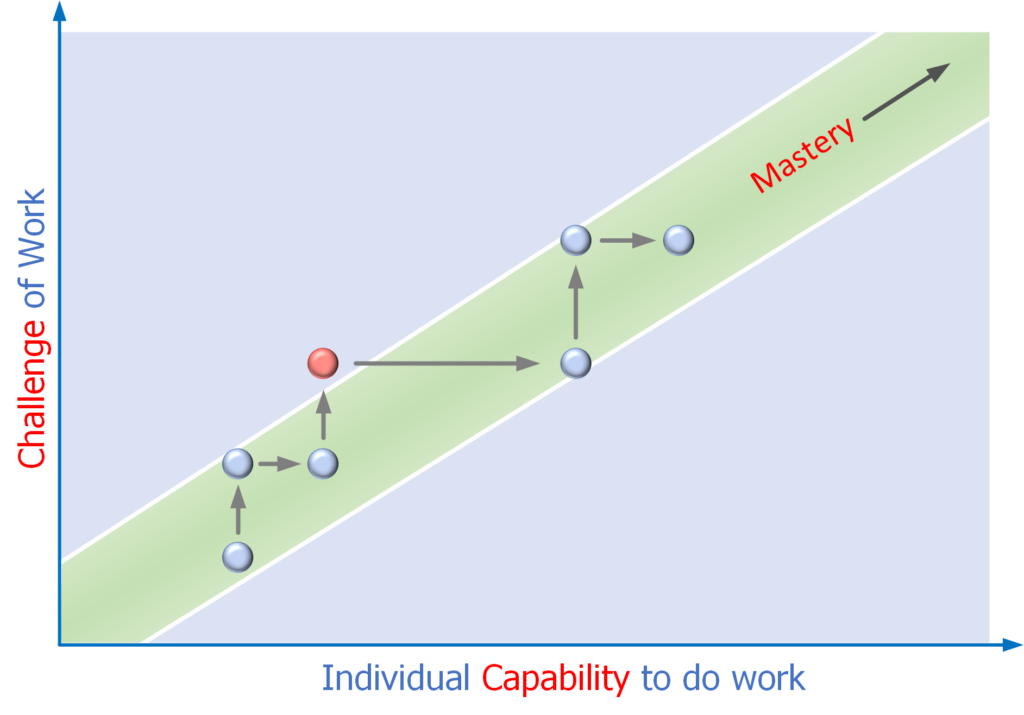In the realm of team leadership, the goal is clear: unlocking the full potential of our teams. According to insights from Dan Pink, a high-performing team member is, at the core, a motivated one. Motivation, Pink suggests, hinges on autonomy, mastery, and purpose.
Fostering Mastery
When coaching, it’s vital to keep in mind that individuals thrive in their ‘flow’—a delicate equilibrium between the challenge of the work and the skills required. Being in this state leads to an upward emotional journey, fostering contentment, hopefulness, enthusiasm, passion, and empowerment. Effective decision-making naturally follows, a key objective for any high-performing team.

On the flip side, being outside this flow can trigger a downward emotional spiral—boredom, pessimism, worry, discouragement, insecurity, and even depression. This emotional state results in ineffective team members, leading to poor decisions, increased waste, and technical debt. Recognizing and ensuring everyone operates within their flow is therefore imperative.
Monitoring the Flow
Regular check-ins, such as one-on-ones and team health checks, are crucial to gauge whether team members are in their flow.
One-on-Ones: Engaging in open conversations during one-on-ones helps identify where individuals stand in their flow. Encouraging transparency builds trust, fostering honest discussions about their current state.
Using a One-on-One Template: Supplementing conversations with a one-on-one template offers a structured approach. Staff members can document their observations, providing valuable insights that can be discussed during the catch-up.
Team Health Checks: Consider incorporating team health checks, utilizing a ‘flow’ chart. Team members anonymously mark their positions, creating a heat map of the team’s overall flow state.
Nurturing Mastery
Depending on where team members fall on the ‘flow’ chart, different strategies can be employed to bring them back into their flow.

Increase the Challenge: For those experiencing boredom, increasing the challenge is key. Offering more significant responsibilities, encouraging involvement in complex tasks, or aligning tasks with individual development goals can rekindle motivation.
Increase Skills: Individuals in the anxiety quadrant may lack the necessary skills. Address this by providing targeted training or exploring alternative methods to enhance their capabilities. Striking a balance is crucial to prevent overwhelming individuals.
Achieving Mastery Over Time
Mastery is a continuous journey, involving incremental steps of increasing challenges and upskilling. The ultimate goal is to position individuals at the top-right-most part of the chart—highly skilled and appropriately challenged in their roles.

Every line manager and Agile coach should strive to guide each team member toward mastery. The outcome: a motivated staff contributing to the overall success of high-performing teams.

0 Comments